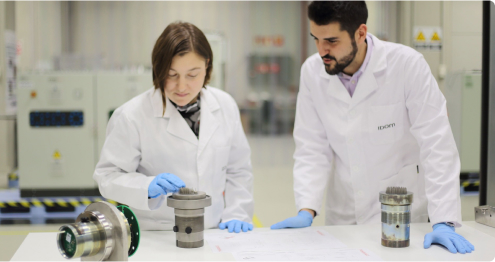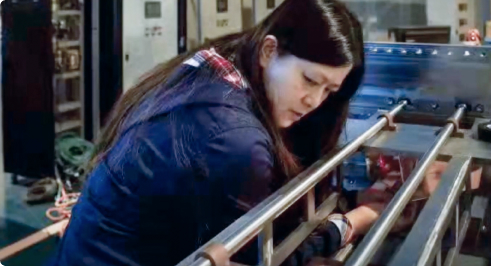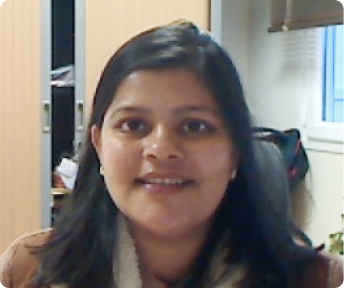GENDER RESEARCH
STATISTICS
Women around the world
United States

Women currently make up roughly half of the STEM workforce in the U.S. The share of women in STEM is not equally distributed.
WOMEN IN STEM JOBS
These numbers have shown relatively little change over the past two decades. In 2000, women accounted for 33% of physical science jobs and 12% of engineering jobs.
WOMEN IN STEM
Despite widespread efforts to grow the participation of women and girls in STEM programs, these numbers showed no significant change between 2014 and 2018 despite a 36% increase in the number of STEM research PhD degrees awarded between 2010 and 2018.
European Union
Science and technology employment
Of 73 million persons aged 15-74, 37.5 million were women and 35.5 million were men.

51.3%
Manufacturing jobs
Women are disproportionately represented in technology service positions and make up a relatively small share of manufacturing jobs.

27%
WOMEN IN STEM
Only one-third of STEM graduates were female, a number that has remained essentially unchanged for the past decade.

1/3%
European Union

Like the US, the EU is also struggling to grow the numbers of girls and women in STEM education.
United Kindom

The UK lags behind the US and EU in employment of women in STEM.
WOMEN IN JOBS
WOMEN IN EDUCATION
These numbers have not changed significantly in recent years.
China

China has made significant strides growing the percentage of female STEM graduates, due to government policies mandating equal educational access to women.
WOMEN IN EDUCATION
They have reached or exceeded parity with men in the percentage of master’s degrees:
They continue to lag in other fields:
WOMEN IN JOBS
Although they are near parity within the workforce, women still represent only a small percentage of senior and leadership roles.

6% female representation in the Chinese Academy of Sciences
Despite official policies mandating equal treatment, female scientists continue to report problems with accessing the same opportunities as men.
India

In India, there is a significant disparity between the proportion of women with doctorates and women working in STEM.
WOMEN IN EDUCATION
There is a similar situation in India, where women make up nearly half of STEM students.
Women earning STEM degrees in India exceeds that of the US, EU and UK.
WOMEN IN JOBS
Unfortunately, this has not yet translated into gender parity in the workforce:
As with other nations, female STEM workers in India often report social pressures and discrimination that limit opportunities for advancement to leadership roles.
Although women account for a high percentage on doctorates, their share of full-time employment in research is low:
A lesser proportion of women in STEM are sent abroad by their parents for higher studies.
Number of women with advanced degrees has increased rapidly in recent history.
2.6 M
graduated in STEM, one of the highest numbers in the world.
There has also been some increase in the number of female principal investigators from 2000–2017 and beyond.
Research references
United States
STEM Jobs See Uneven Progress in Increasing Gender, Racial and Ethnic Diversity
European Union
Women represent about half of workers in science and technology
Despite growing number of women graduates in STEM, women remain under-represented in ICT sectors and innovation, new study finds
United Kingdom
Women in STEM | Percentages of Women in STEM Statistics
China
The Rise of Women in STEM Higher Education in China
China unveils new measures to boost the number of women in science
Women scientists in China: current status and aspirations
India
Women in STEM: The growing numbers, challenges and whether it translates into jobs
STEM and the digital economy for women
Barriers
The STEM Gap: Women and Girls in Science, Technology, Engineering and Mathematics
A “Scientific Diversity” Intervention to Reduce Gender Bias in a Sample of Life Scientists
The Science and Value of Diversity: Closing the Gaps in Our Understanding of Inclusion and Diversity
Girls in STEM: Is It a Female Role-Model Thing?
Women and Men in STEM Often at Odds Over Workplace Equity
Without inclusion, diversity initiatives may not be enough
Making Diversity Programs More Effective
Using Video to Increase Gender Bias Literacy Toward Women in Science
A “Scientific Diversity” Intervention to Reduce Gender Bias in a Sample of Life Scientists
Constructed Criteria: Redefining Merit to Justify Discrimination
BARRIERS
Barriers for women in fusion
Gender Stereotypes
The physical sciences and engineering have traditionally been viewed as male fields, and the impact of these stereotypes begins at an early age.
There is a significant body of research showing that parents, teachers, and co-workers view girls and women as less capable in these fields even though there is little significant difference in academic performance at the K-12 level.
Unconscious biases play a significant role in this problem, and even people who claim to be free of bias can exhibit it in how they treat women in the workplace.

These stereotypes are often internalized, causing women and girls to suffer from impostor syndrome despite their level of actual success.

Fewer Role Models
With fewer women in these fields, girls and women planning to enter them may have vastly fewer role models to inspire interest and serve as mentors.
Women make up even smaller percentages of leaders and senior managers in STEM.
Female scientists and engineers in books, media, and popular culture tend to be just as rare as in the actual workplace, further contributing to impressions that these are not roles for women.
Male-Dominated Cultures
The wide gender imbalances in science and technology fields often perpetuate work cultures that are not welcoming or attractive to women.
Entering these workplaces can be daunting for young women, and they may find their accomplishments discounted even when they match or exceed those of their male peers.

GUIDELINES FOR IMPROVEMENT
Making a difference
Several decades of work in combating these gender imbalances has made it clear that merely recruiting more women does not meaningfully improve their representation in STEM jobs.
Inclusion, not just diversity
Diversity initiatives need to be coupled with efforts to ensure that women are welcomed, supported, and valued. Without these efforts, the same forces that deter girls from entering STEM fields of study can drive women out of the STEM workplace.
Some research suggests that the presence of diversity initiatives in the absence of inclusion can make the problem worse. This may lead men in the organization to assume the problem has been addressed, and they may be less able to recognize discrimination and less supportive of further efforts to reduce it.
Improve bias literacy
While explicit biases against women in STEM have decreased, unconscious bias remains a serious problem.
However, a number of studies have shown that raising awareness understanding of unconscious bias through direct interventions and training can reduce its impact significantly.
Workshops using evidence-based training and videos about gender bias research have been shown to be highly effective.
Cultivate objective standards
Sometimes standards are loose and administrators are allowed to base decisions on “gut instinct” and other traditional subjective standards.
Study after study has shown that male candidates are given preference even when female candidates may be better qualified – regardless of the gender of the decision maker.
However, when organizations require the use of clear, objective, gender-blind standards, this phenomenon largely disappears.



Policies
A pilot project of the GATI scheme was announced in 2020 by the Government of India, on the lines of Athena SWAN in the U.K.
Further, there are post-doctoral fellowships for women under various government departments and agencies. The recently launched Indo-U.S. Fellowship for Women in STEMM (the extra ‘M’ is for Medicine) is recognition of the fact that it is essential to provide opportunity to the talented women in STEMM to enhance their research capability. A doctorate from a reputed institute, and particularly from the developed countries according to some surveys, enhances prospects of a faculty position in the elite institutes in India.
To enhance and promote gender inclusion in STEM and science, technology and innovation (STI), the DST, under the Ministry of Science and Technology, Government of India has organized all of their women-specific programs under one umbrella, called KIRAN (Knowledge Involvement in Research Advancement through Nurturing) and initiated the Women in Science (WOS) schemes to address issues that concern women scientists.
Women’s cells
Women’s cells (or offices or departments) within a university’s human resources department, providing support and protection to women who face harassment, are essential to a safe and healthy work and study environment.
Feminist Approach to Technology (FAT)
FAT is an excellent example of a program whose approaches could be adapted to the sciences to improve women’s participation in fields of science from a young age. FAT’s feminist approach to technology is based on a gendered critique of the design, use and impacts of technology, and on encouraging and empowering women to participate in shaping its future to ensure that technologies do not negatively affect women and girls. They categorize women’s relationships with technology in three ways: women as users, as creators or makers, and as decision-makers; and work in three corresponding thematic areas: women as users of technology, creators, and decision-makers.

Success stories



